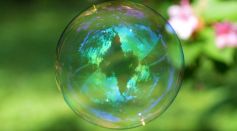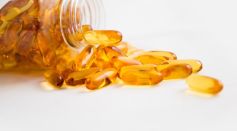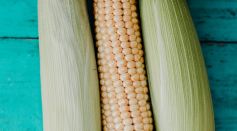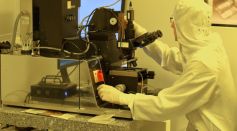Tags: Nanotechnology

Nanomagnets Developed to Construct New Neural Network Model for AI-Based Simulations
Solid-State Device Developed Using Nanodiamonds for Practical Applications in Quantum Technologies
Highest Resolution Achieved Through 3D Imaging Tool Using Nanomaterials

Are Nanoparticles Replacing Antibiotics? Plants May Be Used As Drug Alternative

Solar Nanowire-Nanotube Filter May Help Make Drinking Water More Accessible

Soap-Like Bubbles Used as Nano-Containers to Develop a Tool to Deal with Future Pandemics More Efficiently

Nanomaterial for Better Insulin Effects; New Approach to Effectively Treat Type 1 & 2 Diabetes
Hairs Shaved Off Nanocrystals May Develop Better Functioning Electronic Devices Like Solar Cells, Phones, and Quantum Computers

How Do Quantum Dots Help Diagnose, Treat Diseases? How These Allow Scientists, Doctors See Inside the Body

Nanocatalyst Embedded with Copper-Silver-Gold Developed to Improve Carbon Capture

Nanocapsules for a More Effective Chemodynamic Therapy Developed for One-Step Cancer-Fighting Approach

Magnetic Nanoparticles Develop As New Computational Tool Potentially Useful for Drug Delivery, Among Others

Lifeboat Foundation Reacts to NATO And Russian Conflict

Fluidic Device Makes Opposites Attract; How Incompatible Fluids Like Oil and Water Become Compatible

New Nanocrystal Gel Can Stitch 2 States, Contributing to Energy, Telecommunications

Cancer Treatment: Corn Juice Derived Nanoparticles to Inhibit Mice Tumor Growth

Nano-Coated Synthetic Enamel with Properties Near Natural Teeth Coating Developed

Ebola Virus, COVID-19 Diagnosis Through Nanosensors Developed for Fast, Accurate, Cost-Oriented Results

Self-Powered System Inspired by Lightweight Triboelectric Nanogenerators Operate Smart Saddles to Protect Equestrians

Tiny Electricity Generator Developed from Quantum Dots Incorporated with Graphene Nanoribbons for More Efficient Energy Conversion
Most Popular

Largest Known Volcanic Aquifer Discovered Beneath Oregon's Cascades

New 'Supergiant' Sea Bug Found in South China Sea, Named After Darth Vader

Mediterranean Sea Was Refilled by a Catastrophic Flood Millions of Years Ago

Mysterious Cosmic Waves That Sound Like Birds Detected in Unexpected Space Region




